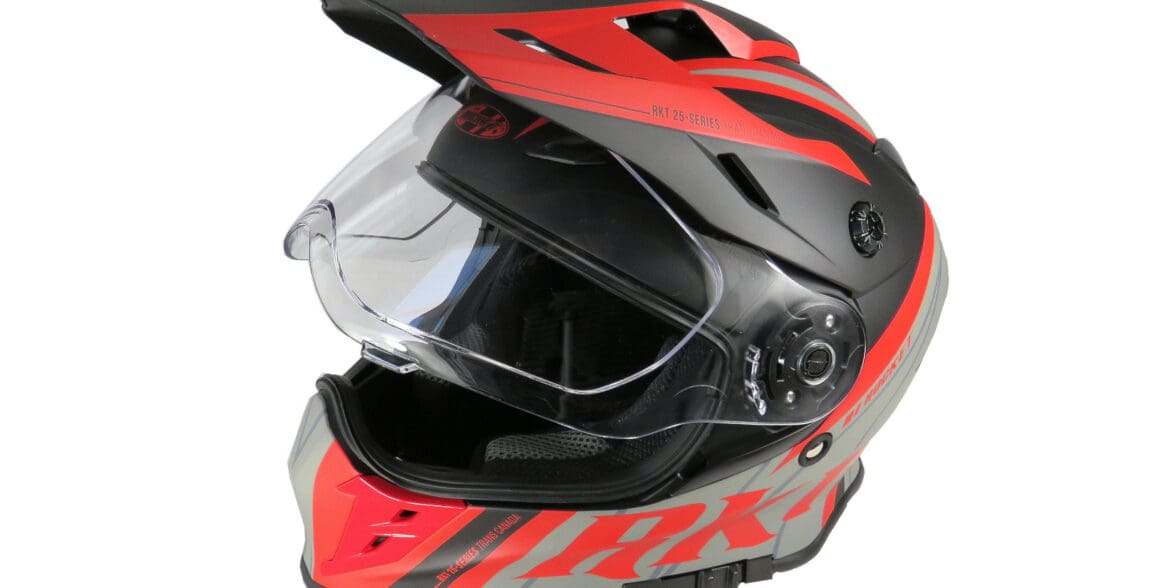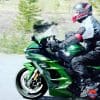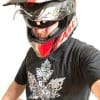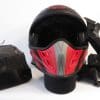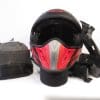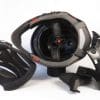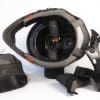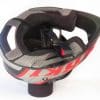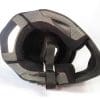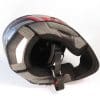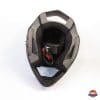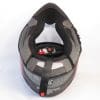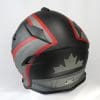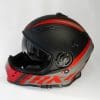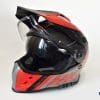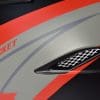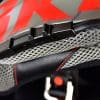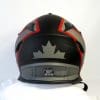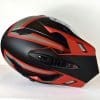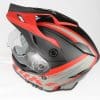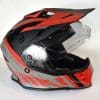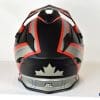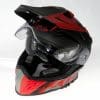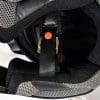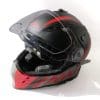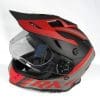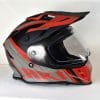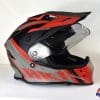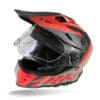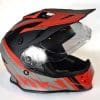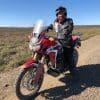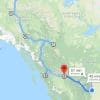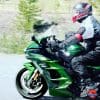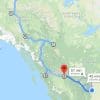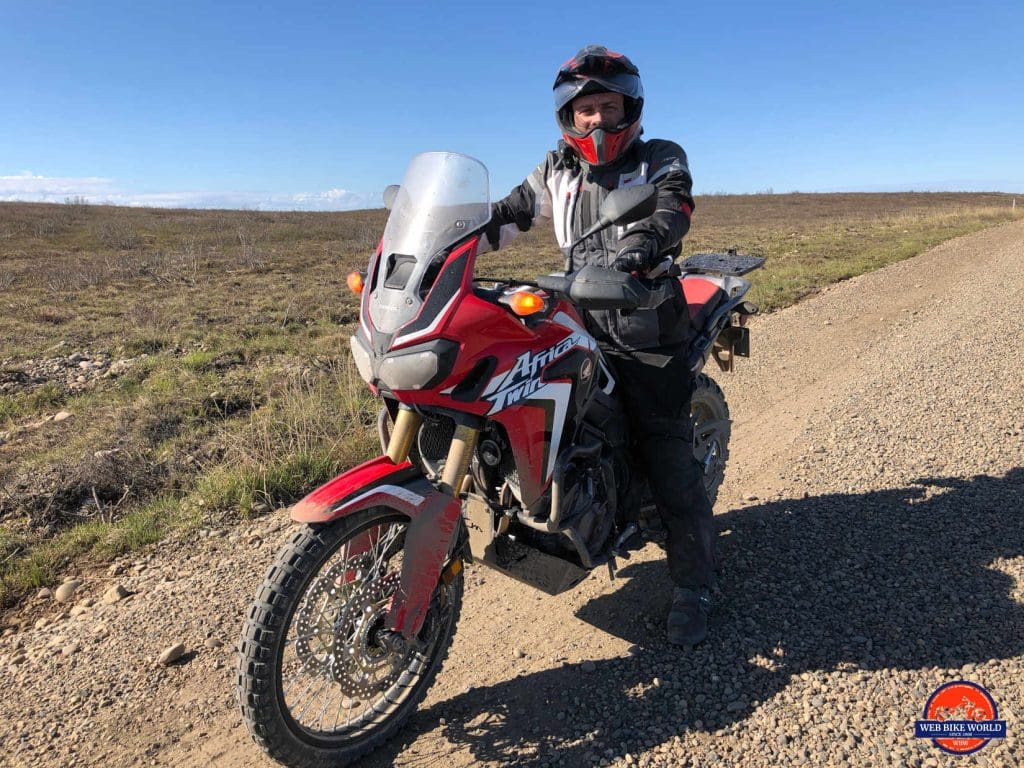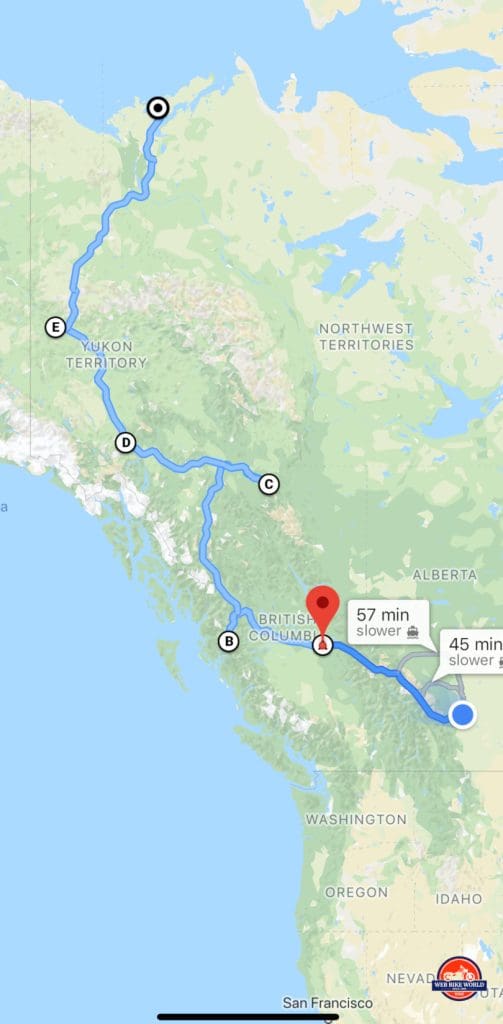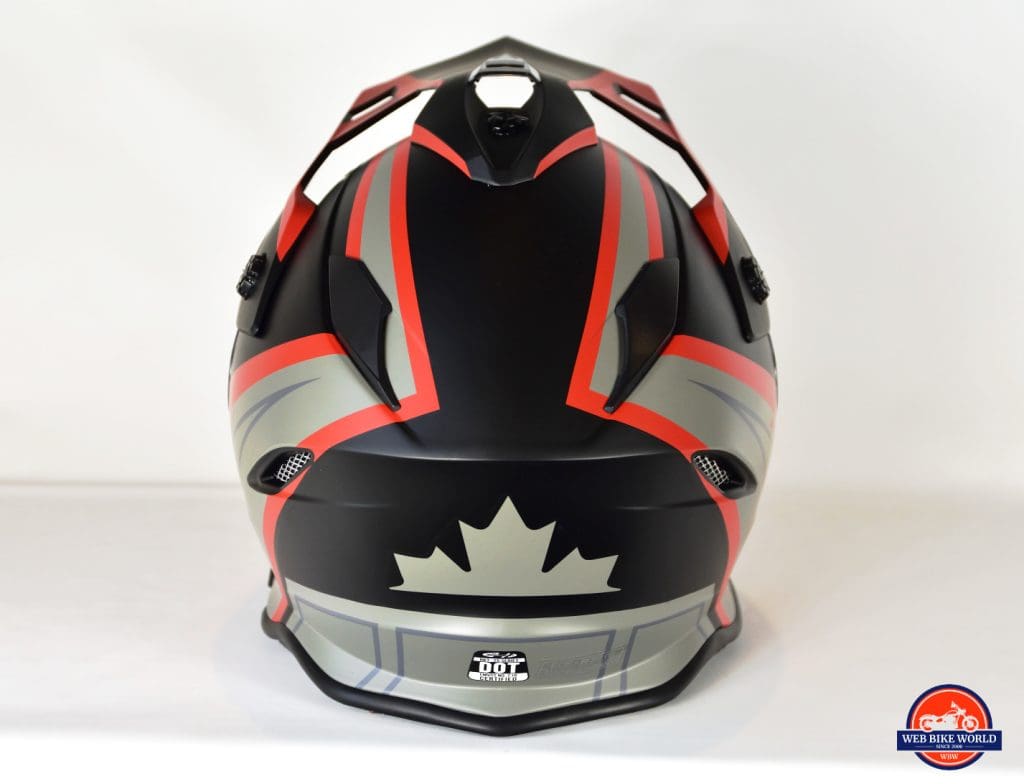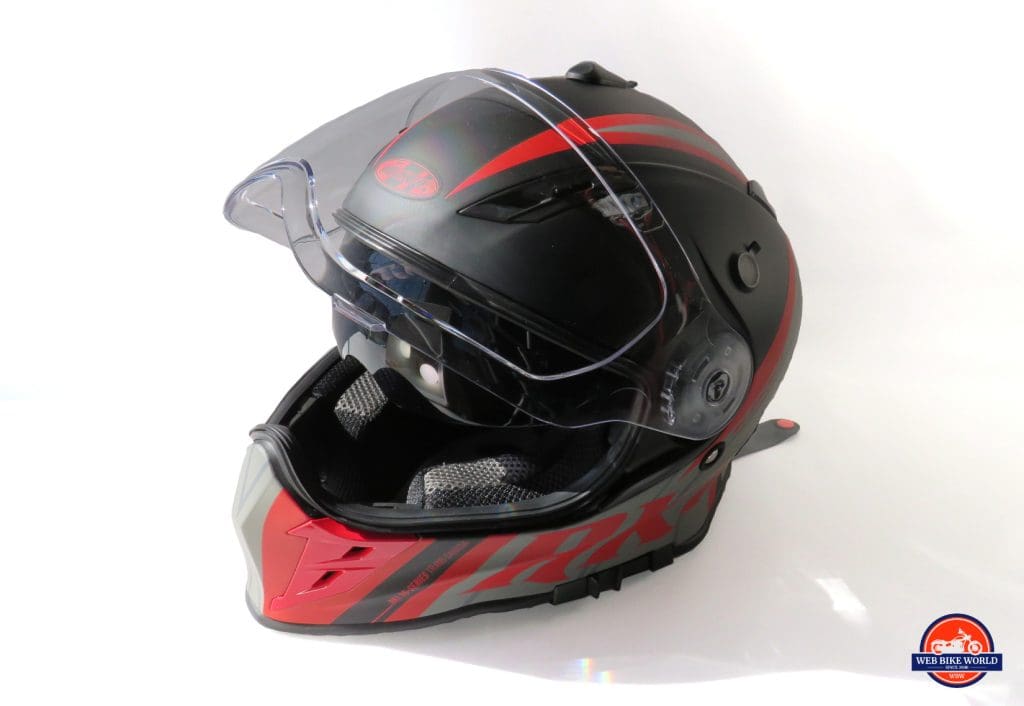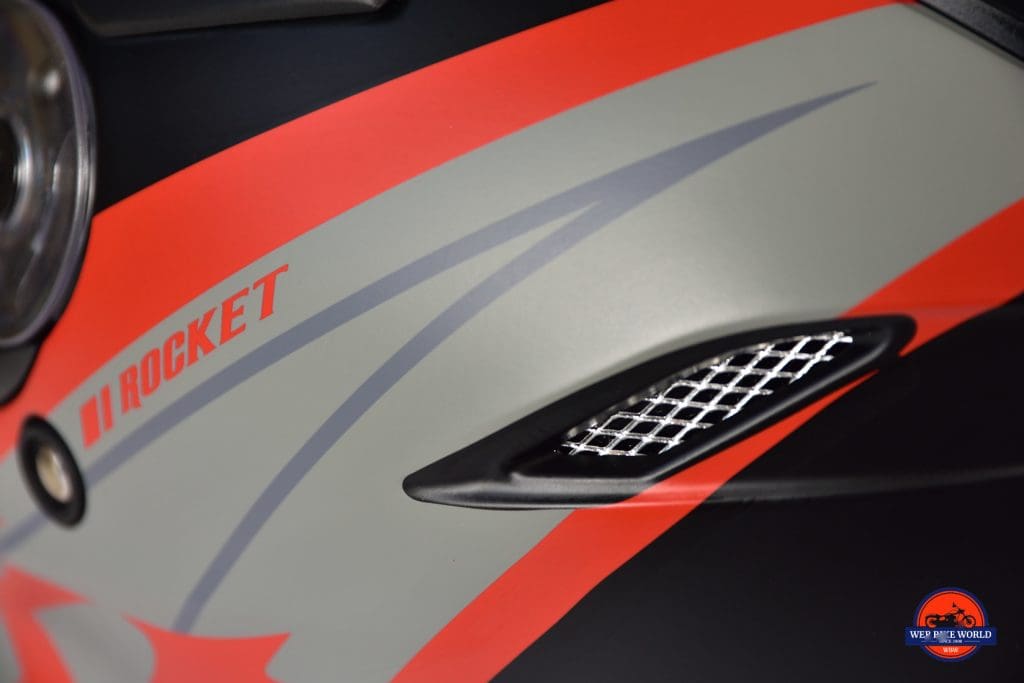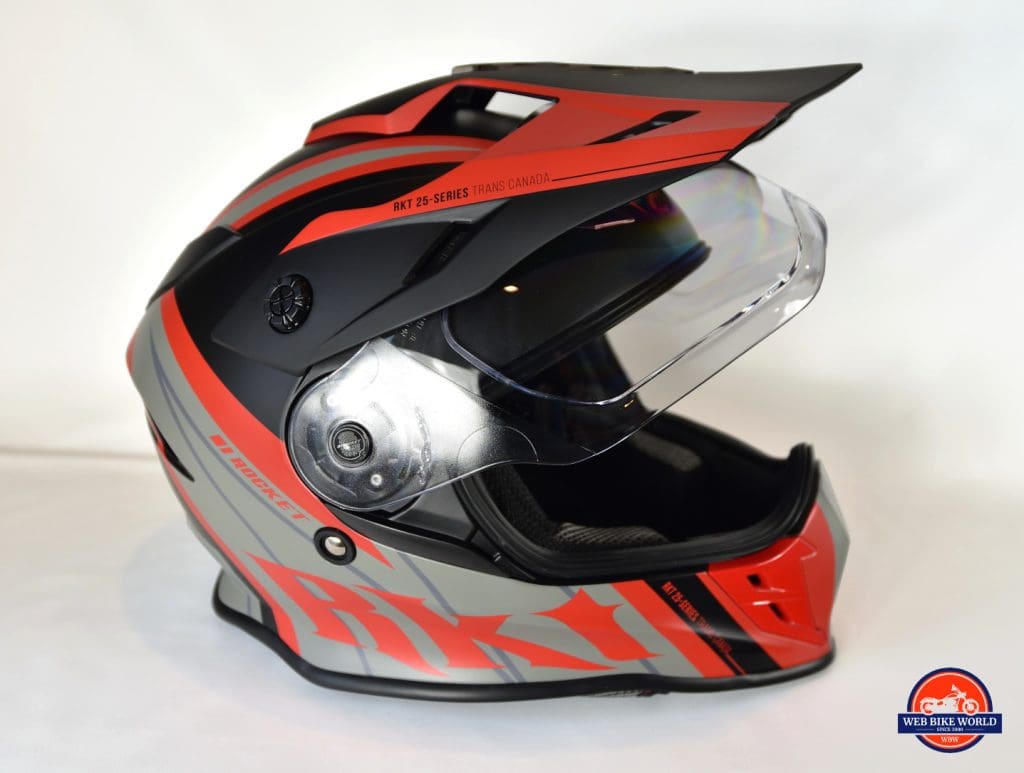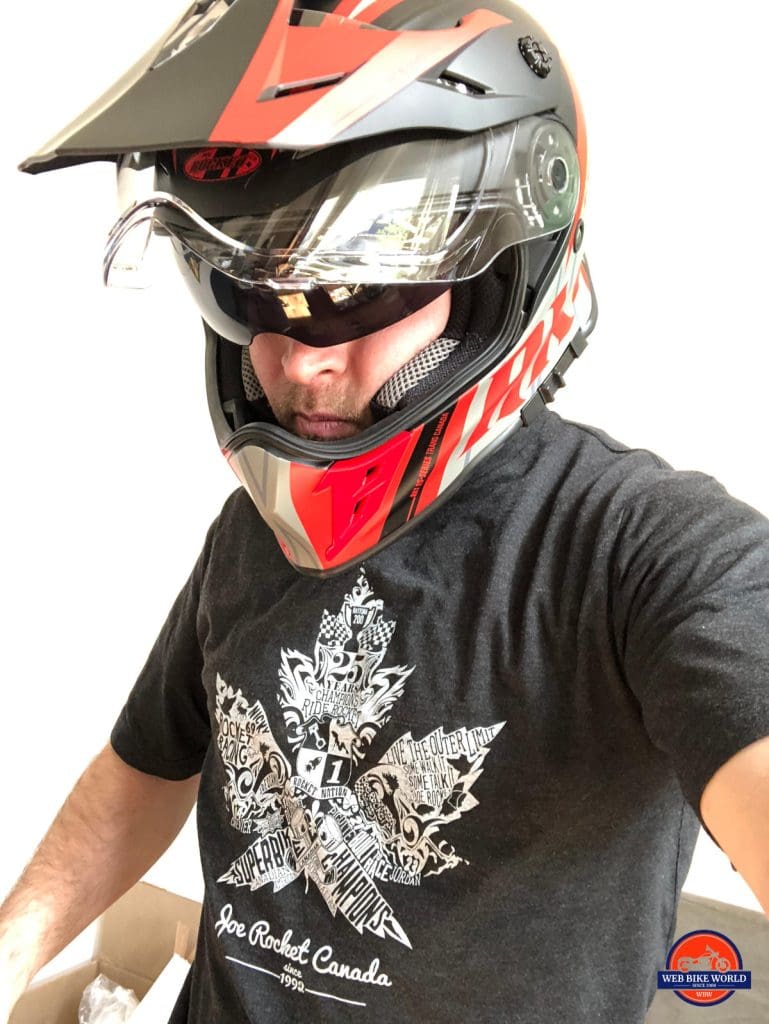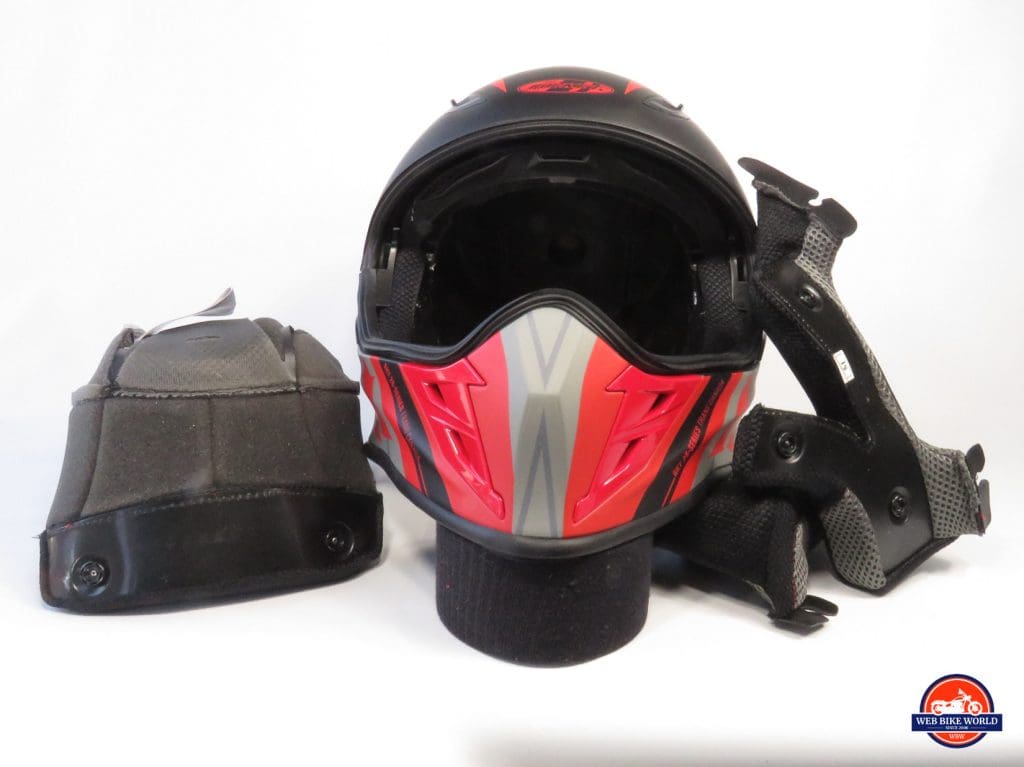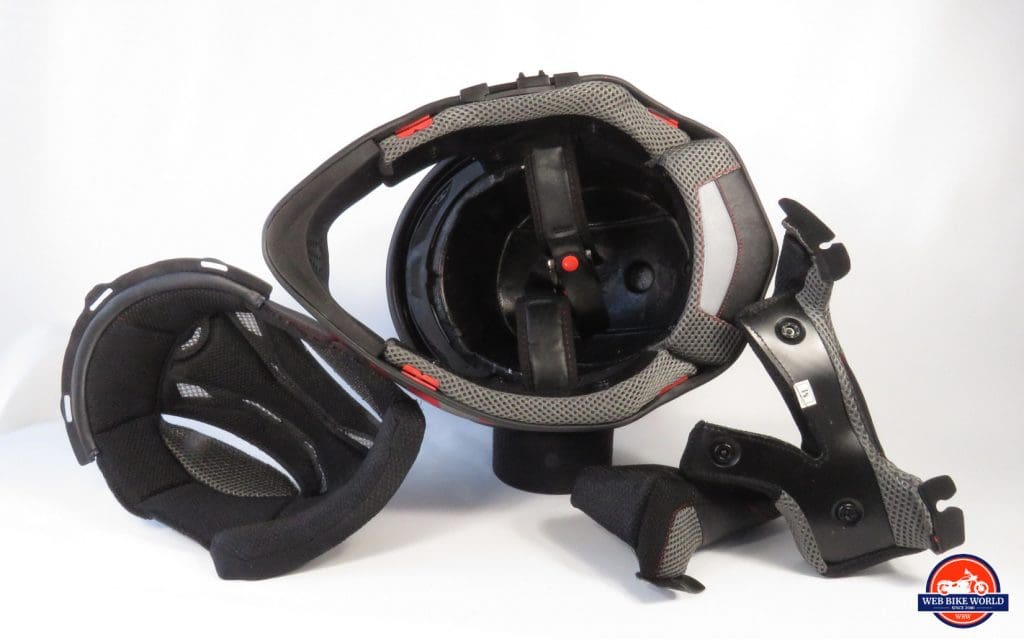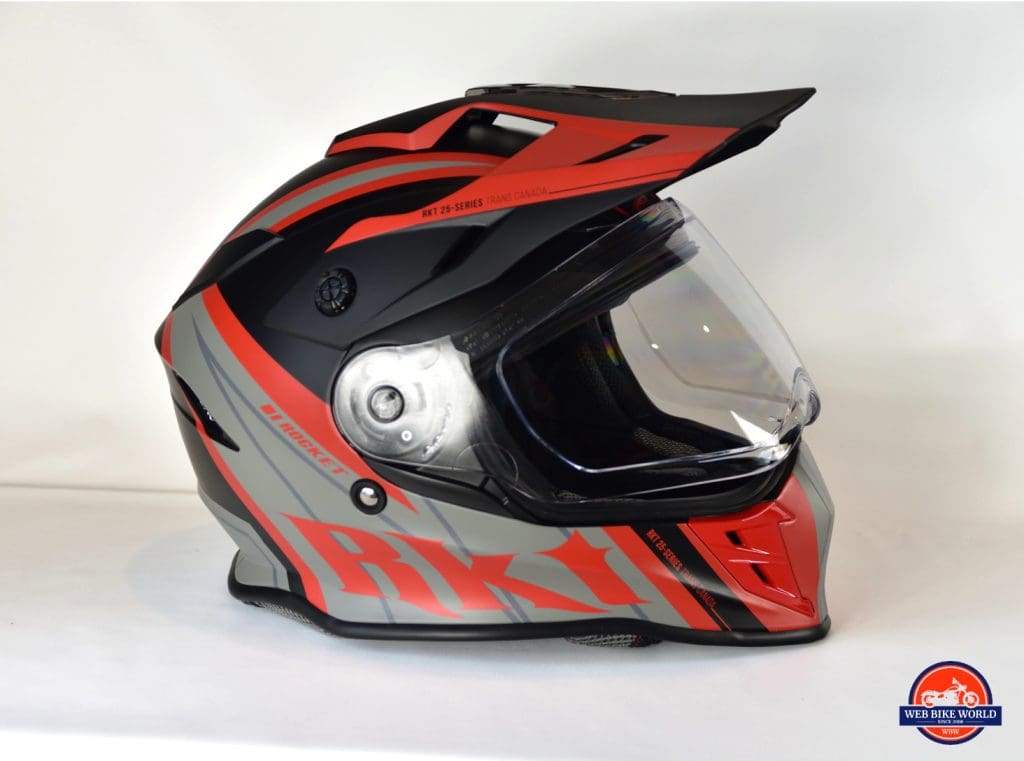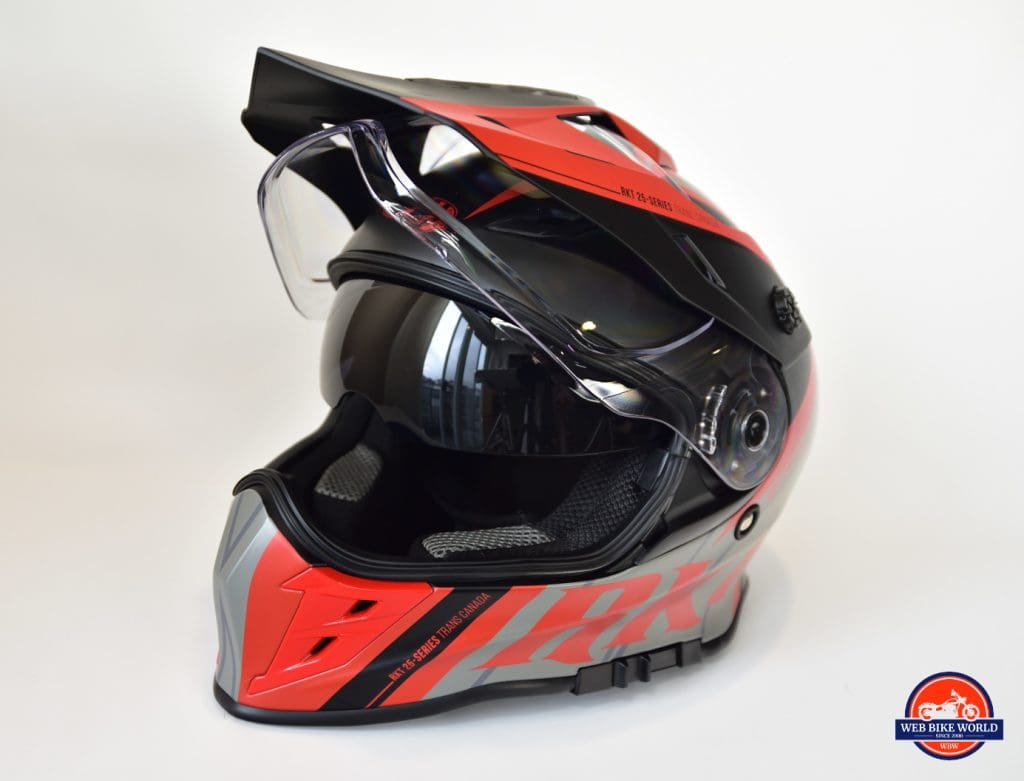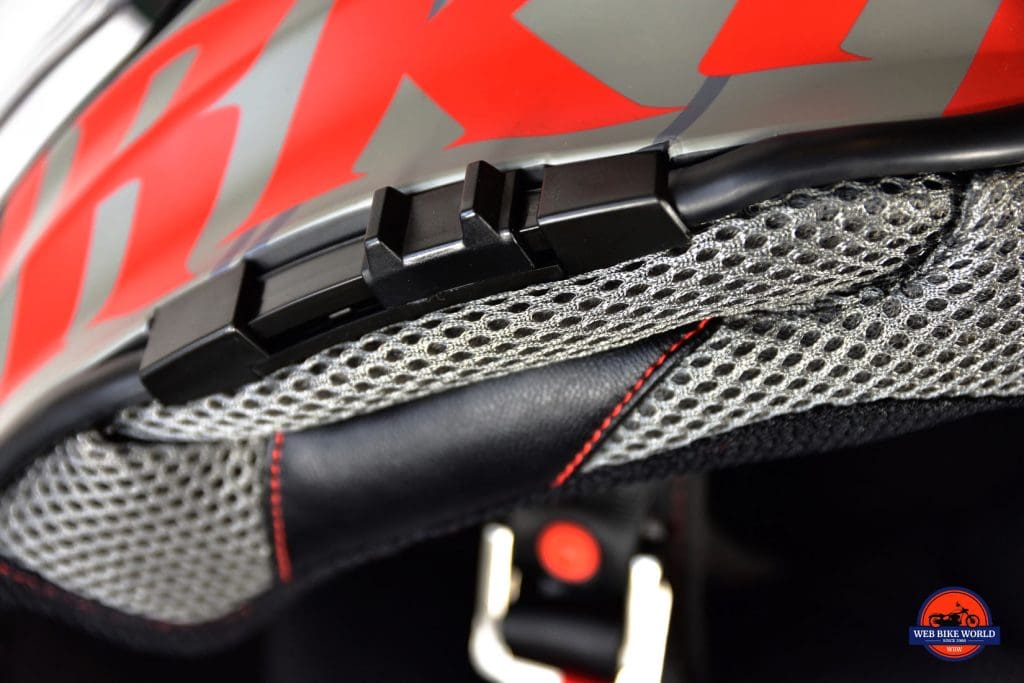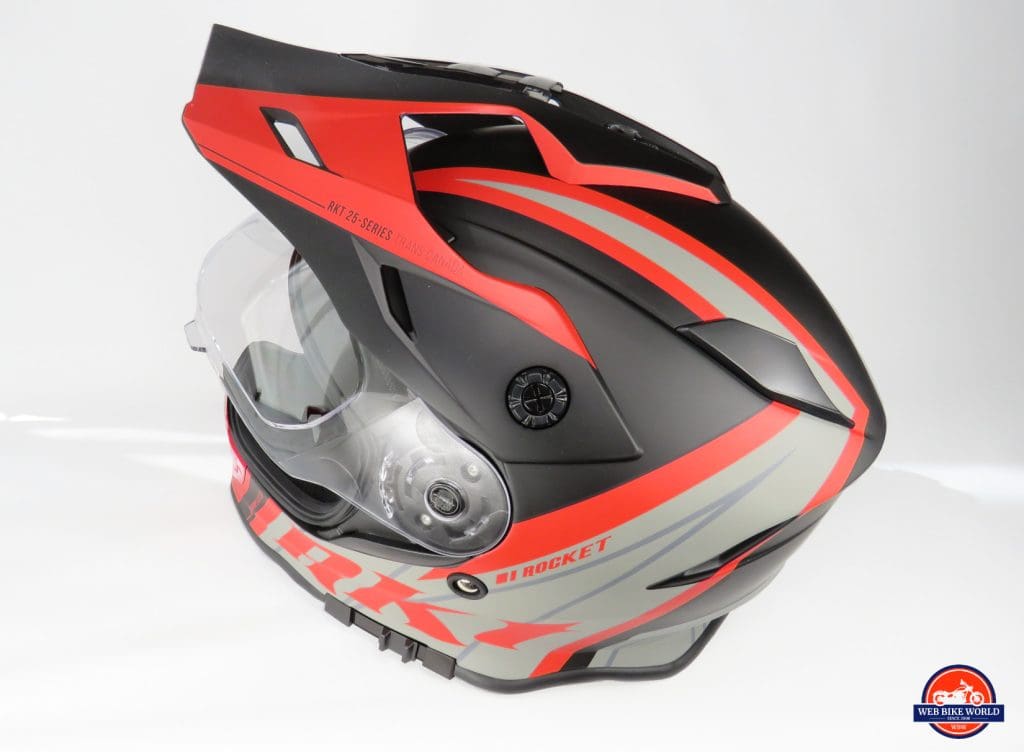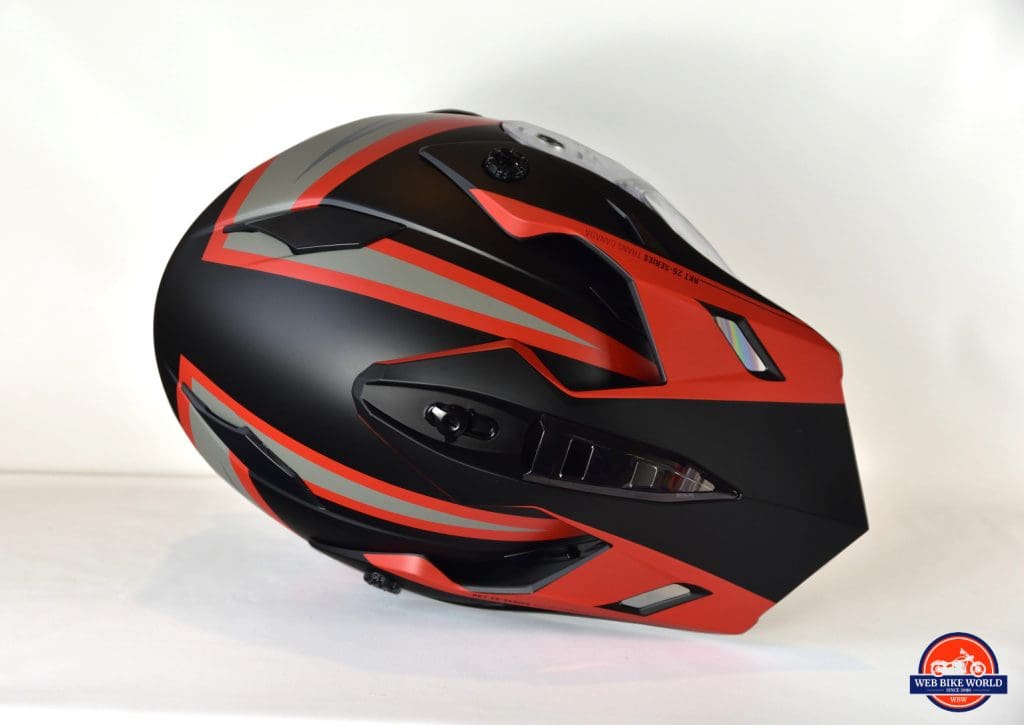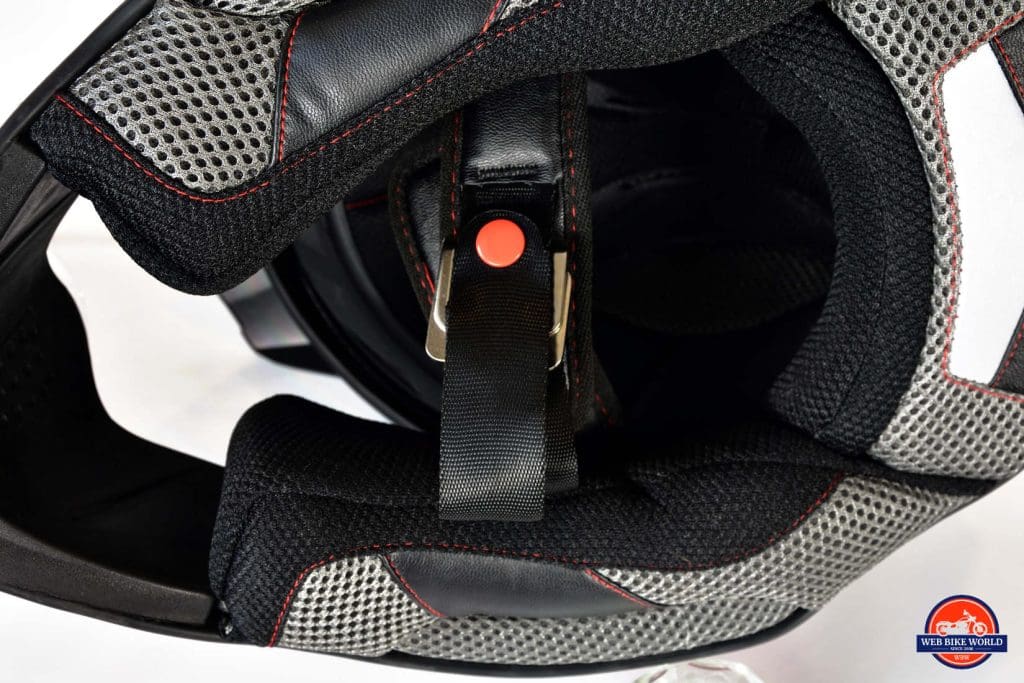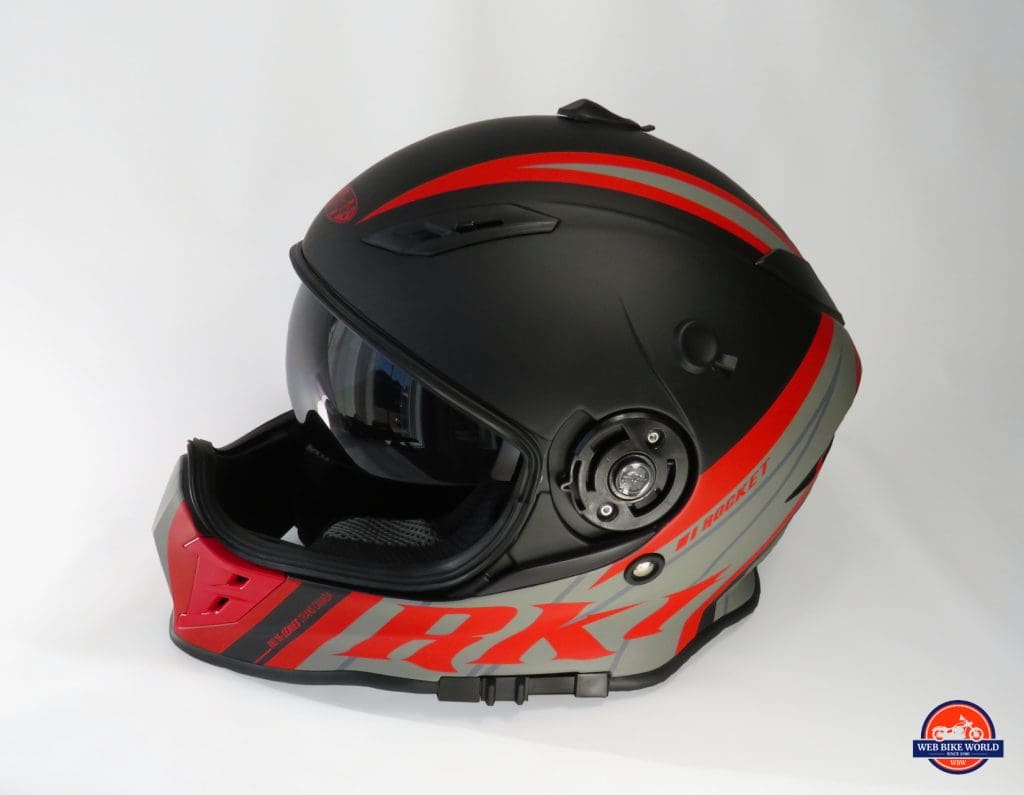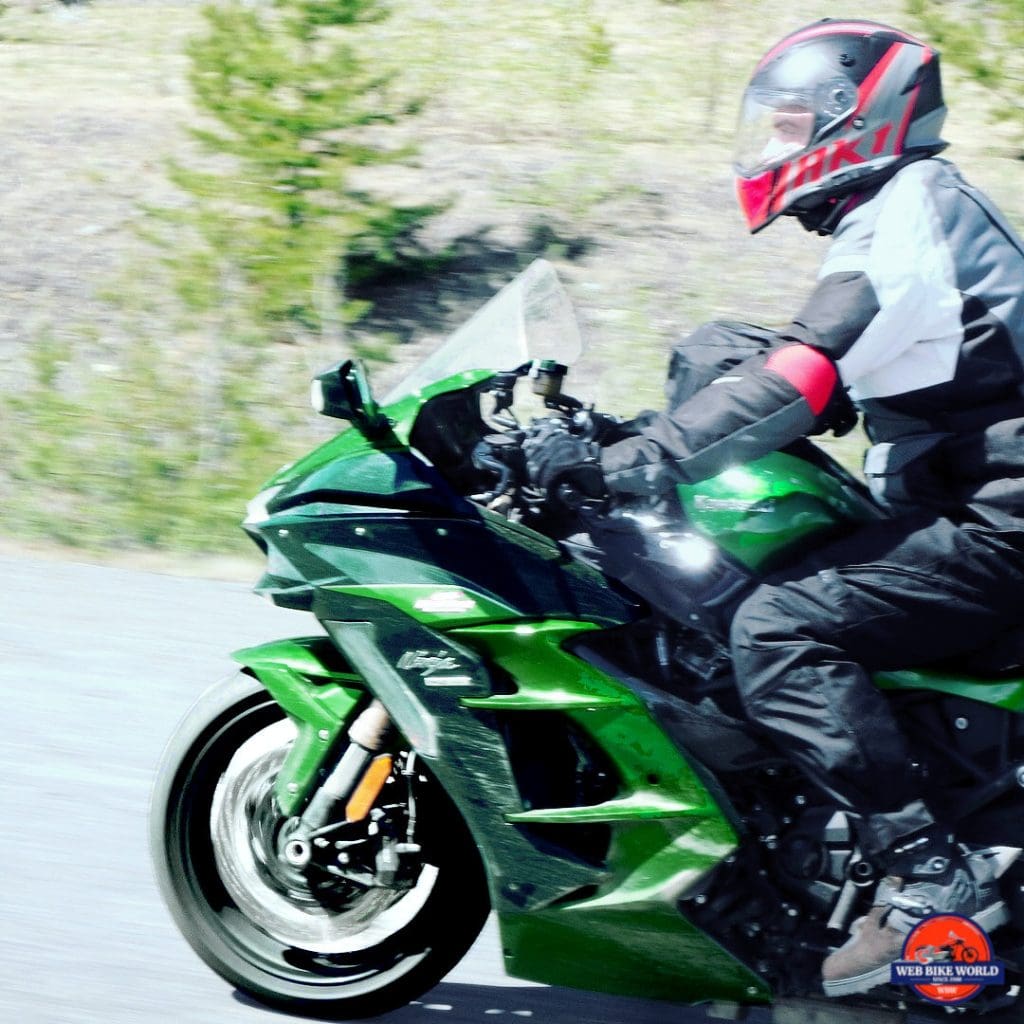What does Tuk Tested mean?
This helmet has been tested more thoroughly than any other piece of gear in WBW history to date (that I’m aware of).
I just returned from a 5600-mile adventure ride while using the RKT-25 helmet. Beginning from my home in Airdrie, Alberta, Canada it ranged all the way to the northernmost location reachable by road in Canada: Tuktoyaktuk or Tuk for short.
Over the course of that trip, I encountered temperatures ranging from a chilling 30 degrees all the way up to a sweltering 90 degrees Fahrenheit and all the UV radiation accompanying it.
Plenty of rain almost every day for the first week straight, wicked dust on remote gravel roads and literally thousands of insects and flying rocks assaulted this helmet for two and a half weeks nonstop.
Tuk Tested is an unprecedented higher standard to gauge riding gear worth.
First Impressions
The colors really cry out to me along with the aerodynamic grooves on each side of the chin bar that run back and slightly upwards coming to a point at the rear. It gives the illusion of movement even when the helmet is just sitting there.
The motocross style chin bar is less pronounced than on a solely off-road example and right away I realize this is a convertible helmet that will fit into my adventure and sport riding motorcycling needs. At least I think there’s a lot of potential for it to at first glance.
On the road, the streamlined shape isn’t prone to excessive lift or pull if the optional sun peak isn’t installed.
Fit and Finish
The RKT-25 is certainly no threat to premium helmet brands like Shoei and Arai when it comes to finishing quality, but it holds its own. One thing I find peculiar is the strange creaking noise it makes when you flex opposite sides of the chin bar inwards. I’ve never encountered another helmet that does that.
The A.T.P.A.™ Advanced Thermo-Poly Alloy outer shell is double layered with a triple layer of EPS foam on the inside and that may have something to do with the unusual noise.
Fitment
Pulling on the helmet I noticed the padding is all constructed of smooth mesh nylon that slides well and feels slightly cool on my face. It’s nice, but I also notice how firm it is pressing on my cheeks and how immediately I look like a teenage girl posing for a selfie thanks to the “duck lips” produced by the pressure.
After a couple of thousand miles, I found the padding relaxed to a more comfortable degree that eliminated the Donald Duck impression, thankfully.
Removable and Washable Lining
All the padding is easily removed and installed for washing or if there is an emergency and responders need to help you.
Even after wearing it in very dusty and dirty conditions I haven’t noticed any funky smell or nasty buildup urging me to wash any of it. I’m not a slob, it’s just not necessary at this point which impresses me greatly.
Visor and Integrated Sun Lens
Visor
The visor is a good one when it comes to scratch resistance and clarity. The eyeport opening is wide and I found no issues even when using it in heavy rain and with a thick buildup of insect corpses on it. The only exception is the half inch sealing edge on it is annoying to look through if you like to ride with the visor cracked open slightly as I do.
It cleans nicely and comes off the helmet really well when you flip it all the way up and depress both buttons on the pivoting points.
Getting it back installed is a different matter though. It took some patience and holding my tongue just right to get the notches lined up on both sides equally and then clicking everything back in place. Once was enough before I decided cleaning it while still installed on the helmet would work well enough to avoid further visor surgery.
Sun Lens
This is my favorite integral sun lens because it’s SUPER dark compared to any other one I’ve experienced to this point. I’ve always found them too light on the tint to be useful in bright sunlight, but not the RKT25. It’s perfect for my liking.
Even better is how when the sun is high in the sky I only partially deploy the sun lens far enough to block the sun while not obstructing my view of the road. This ends up working almost the same way as the visor in my car does.
The switch for extending or retracting the internal lens is located on the left lower edge of the helmet making it easy to find consistently while riding and the action on it is stiff but smooth.
Bluetooth Issues
This sun lens control switch location combined with the way the bottom edge of the helmet outer shell flares outward and slightly upward makes it frustratingly impossible to mount my SENA 30K in the usual desired location. I tried to no avail and ended up mounting it on the opposite side instead. This means my SENA unit is on the helmet pointing backward and it confused some of my friends to see it that way.
I can still use every feature on the SENA with the exception of raising the antenna for the dual mesh function while wearing the helmet. It just took a little getting used to, but in order to raise the antenna, I have to use two hands. It’s not perfect, but it works.
The speakers only have one place to install inside the helmet and that’s in the depressions right above where the chinstrap comes through the EPS layer. Luckily, that’s exactly where my ears are and I can hear the music or phone call clearly without having the speakers irritate my ears in any way.
Optional Sun Peak/Roost Deflector
The peak works okay for deflecting roost while riding off-road or down really nasty gravel roads as I did in the Northwest Territories, but really did nothing as a sunshade of any kind while I wore it on the helmet.
I much prefer taking it off and leaving it off while I ride, especially at highway speeds where the wind catches it and pushes the front of the helmet painfully into my upper forehead.
I tried flipping it around and mounting it pointing straight backward in the hope it would stop hurting me, but it didn’t make any noticeable difference.
In the end, I just removed it and put it away when I wear the helmet on road.
Noise While Riding
The RKT25 is a fairly quiet helmet as the standard full face class goes. It doesn’t have noise canceling technology in it or anything, but there’s an acceptable amount of wind roar without any whistling or other unusual business going on.
The exception to this is if you remove the sun peak/roost protector and fail to re-install the mounting hardware in the screw holes like I did at first. The screw holes end up acting like small flutes and produce a horrifying squeal at highway speed akin to fingernails running down a chalkboard.
Don’t lose your mounting hardware for this helmet’s peak or you’ll be really sorry.
GoPro Mount
When I heard the helmet comes with a camera mount I was thrilled to try it out. Unfortunately, it turns out to be just the top screw hole for the sun peak you use to mount the GoPro.
I was hoping for the quick release style of base you get with the camera to mount, but instead, I had to fiddle about with finding an adaptor to the 8mm screw in order to mount my camera on the helmet.
Once I sorted that out, the GoPro indeed did mount securely on the helmet and I was able to film good video from there easily.
Chinstrap
There’s a D ring chin strap that has unusually large loops. I’m more in favor of micro latch systems to be honest for faster and easier helmet install and removal, but have nothing negative to say about the D rings. They work as they should and the strap doesn’t chafe or rub anywhere on my face.
Off Road Mode
If you remove the visor completely and install the sun peak/roost deflector you can wear goggles with this helmet easily.
Joe Rocket Canada provides two black plastic covers that snap into place where the visor pivot points are in order to keep dirt and debris out of the mechanism when you go play in the mud.
Very well done indeed! These covers install or uninstall quickly and easily too.
The Final Verdict?
After logging about 6000 miles with the helmet I’m a fan and will continue using it for sure. I love the versatility and comfort of it along with the integrated sun lens.
It keeps my head cool or warm depending on what the ambient temperature is and it’s acceptably quiet too.
For the low price, it’s a terrific buy, and I prefer it over the Vemar Kona I recently reviewed by far.
Pros
- Excellent value and design for the price ($259.99 Canadian dollars)
- Dry-Tech waterproof and moisture-wicking, washable liner system
- Warm in cold weather, cool in hot weather, decent venting
- Lightweight at 3 lbs 6 oz even with optional sun visor installed
- 2 shells + 3 dual-density EPS foam liner
- DOT and ECE 22.05 compliant
- Surprisingly quiet and for the price
- Quick push button remove visor system
- Rubber coated, matte finish on the exterior is easy to grip
- Quickly and easily converts to off-road, sport or adventure config
- Easy to love graphics package including maple leaf on rear or helmet
Cons
- Only available in Canada with no Joe Rocket US equivalent
- Slider switch for controlling internal sun visor and a tapered bottom edge of the shell makes mounting SENA or other Bluetooth units impossible on left side
- Visor fogs up excessively in very cold or very humid weather
Specs
- Manufacturer: Joe Rocket Canada
- Where to Buy: Joe Rocket Canada
- Price (When Tested): $259.99 Canadian Dollars
- Made In: China
- Alternative models & colors: Solid Black for $239.99
- Sizes: XS to XXL
- Review Date: June 21, 2018


